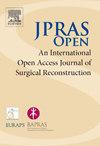Fat embolism following fat grafting: A systematic review of reported cases
IF 1.5
Q3 SURGERY
引用次数: 0
Abstract
Background
This systematic review aims to consolidate and analyze reported cases of fat embolism following fat grafting, focusing on patient demographics, procedural characteristics, clinical features, diagnostic methods, management strategies, and outcomes.
Methods
A systematic review following the Preferred Reporting Items for Systematic Reviews and Meta-analyses guidelines was conducted across multiple databases, including PubMed, Google Scholar, Cochrane, Embase, MEDLINE, and Scopus, up to January 31, 2024. Inclusion criteria encompassed case presentations diagnosing fat embolism or fat embolism syndrome post-fat grafting in patients over the age of 18 years. Data were extracted using EndNote® X21.
Results
From 1051 identified studies, 71 met inclusion criteria, encompassing 137 patients. The mean patient age was 36.22 years, with 90.5 % being female. Liposuction was the predominant fat harvesting method. Ocular signs were the most common presentation (50.8 %), followed by neurological (42.2 %) and cardiopulmonary (32.0 %) symptoms. Diagnostic methods varied, including imaging and histopathology. Supportive care was the primary management strategy. The overall mortality rate was 34.3 %, with 88.6 % of survivors experiencing permanent sequelae.
Discussion
This study acknowledges several limitations in evidence, including heterogeneity, recall bias, language limitations, and potential publication bias due to studies with worse outcomes. Fat embolism following fat grafting, though rare, can lead to significant morbidity and mortality. Early recognition and prompt management are crucial. This review highlights the need for standardized diagnostic and treatment protocols to improve patient outcomes in fat grafting procedures.
Other
This study received no external funding and was previously registered with the Prospective International Register of Systematic Reviews (PROSPERO).
脂肪移植后的脂肪栓塞:对报告病例的系统回顾
背景本系统综述旨在整合和分析脂肪移植术后脂肪栓塞的报道病例,重点关注患者人口统计学、手术特征、临床特征、诊断方法、管理策略和结果。方法截至 2024 年 1 月 31 日,在多个数据库(包括 PubMed、Google Scholar、Cochrane、Embase、MEDLINE 和 Scopus)中按照《系统综述和元分析首选报告项目》指南进行了系统综述。纳入标准包括诊断为脂肪栓塞或脂肪栓塞综合征的病例,患者年龄在 18 岁以上。使用 EndNote® X21 提取数据。结果从 1051 项已确定的研究中,有 71 项符合纳入标准,包括 137 名患者。患者平均年龄为 36.22 岁,90.5% 为女性。脂肪抽吸是最主要的脂肪抽取方法。眼部症状是最常见的表现(50.8%),其次是神经症状(42.2%)和心肺症状(32.0%)。诊断方法多种多样,包括影像学和组织病理学。支持性治疗是主要的治疗策略。总死亡率为 34.3%,88.6% 的幸存者会留下永久性后遗症。讨论本研究承认证据存在一些局限性,包括异质性、回忆偏倚、语言局限性,以及由于结果较差的研究导致的潜在发表偏倚。脂肪移植后发生脂肪栓塞虽然罕见,但可导致严重的发病率和死亡率。早期识别和及时处理至关重要。本综述强调了标准化诊断和治疗方案的必要性,以改善脂肪移植手术中患者的预后。
本文章由计算机程序翻译,如有差异,请以英文原文为准。
求助全文
约1分钟内获得全文
求助全文
来源期刊

JPRAS Open
Medicine-Surgery
CiteScore
1.60
自引率
0.00%
发文量
89
审稿时长
22 weeks
期刊介绍:
JPRAS Open is an international, open access journal dedicated to publishing case reports, short communications, and full-length articles. JPRAS Open will provide the most current source of information and references in plastic, reconstructive & aesthetic surgery. The Journal is based on the continued need to improve surgical care by providing highlights in general reconstructive surgery; cleft lip, palate and craniofacial surgery; head and neck surgery; skin cancer; breast surgery; hand surgery; lower limb trauma; burns; and aesthetic surgery. The Journal will provide authors with fast publication times.
 求助内容:
求助内容: 应助结果提醒方式:
应助结果提醒方式:


